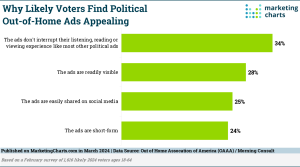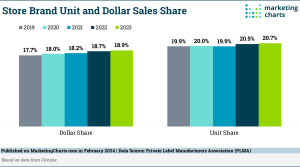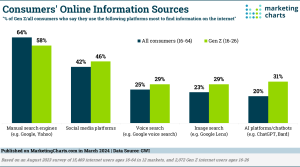
Millennials might be taking a backseat in the marketing world to Gen Z, but they still get plenty of attention. Their lives are deconstructed on many different levels, from e-commerce habits to their online search preferences and their grocery shopping habits. Those analyses are all helpful in their own right, but – stepping back to the big picture for a moment – how many of these prized individuals are there in the US? The most recent data out from the Census Bureau gives a sense of how large this coveted generation is.
Before putting out some numbers, there are a few problems to take note of. Chiefly, there has been debate over the exact definition of a Millennial. This year the age range of 27-42 might be most appropriate, per Pew Research Center, meaning that last year (for the Census Bureau data covered), the age range would have been 26-41 (born 1981-1996).
By that definition, there were 72.2 million Millennials in the US last year, constituting 21.7% of the population.
Meanwhile, it’s also worth noting that most Millennials don’t even identify as Millennials, and a young Gen Xer might feel more culturally similar to Gen Y. In other words, cultural and behavioral tendencies don’t tend to have fixed age breaks. (That’s why many argue that it’s more useful to look at personas rather than age brackets. In fact, age doesn’t factor into identity formation as much as some other traits.)
Nevertheless, things being the way they are, marketers and researchers often look at generations and age brackets. So here’s a reference list of some commonly used age brackets and their corresponding population estimates and population shares as of July 1st, 2022 (the most recent data available).
- 12-17: 25.3 million (7.7%) [pop share down]
- 18-24: 31.3 million (9.4%) [pop share up]
- 25-34: 45.5 million (13.7%) [pop share flat]
- 35-44: 43.7 million (13.1%) [pop share flat]
- 45-54: 40.4 million (12.1%) [pop share down]
- 55-64: 42.1 million (12.6%) [pop share down]
- 65-74: 33.8 million (10.1%) [pop share flat]
- 75+: 24.0 million (7.2%) [pop share up]
Some other popular age groups:
- 18-29: 53.5 million (16.1%) [pop share up]
- 18-34: 76.8 million (23.1%) [pop share up]
- 18-49: 140.1 million (42.1%) [pop share up]
- 35-49: 63.3 million (19.0%) [pop share flat]
- 50-64: 62.9 million (18.9%) [pop share down]
- 50+: 120.7 million (36.2%) [pop share up]
- 55+: 99.9 million (30.0%) [pop share up]
- 65+: 57.8 million (17.3%) [pop share up]
And the generations (as defined by Pew Research Center here):
- Gen Z (born 1997-2012): 69.6 million (20.9% pop share)
- Millennials (born 1981-1996): 72.2 million (21.7% pop share)
- Gen X (born 1965-1980): 65.4 million (19.6% pop share)
- Boomers (born 1946-1964): 68.6 million (20.6% pop share)
- Silent (born 1928-1945): 18.3 million (5.5% pop share)
Want an Excel file showing population estimates by single year of age and gender? We’ve formatted the data for you and made it available for download here.
A couple of other facts to leave with:
- As of July 1st last year, there were an estimated 88,988 centenarians (100+) in the US. Though that number had been growing each year for some time, it declined by almost 9,000 last year, following a decline of roughly 7,000 the previous year. Sadly, this is most likely due to COVID-19. Meanwhile, some 71,903 – or 80.8% – of centenarians last year were female, up from 75% the year before.
- There were more males than females for each single year of age from newborn through age 54, but then more females than males for each single year of age from 55 onwards. The biggest disparity in favor of males was for 24-year-olds (114,767 more), while for females it was for 73-year-olds (222,625 more).
Interested in different age groups’ media habits? Check out this report: US Media Audience Demographics, 9th Annual Edition

























